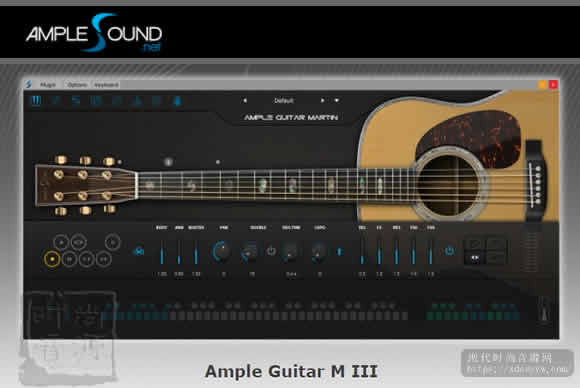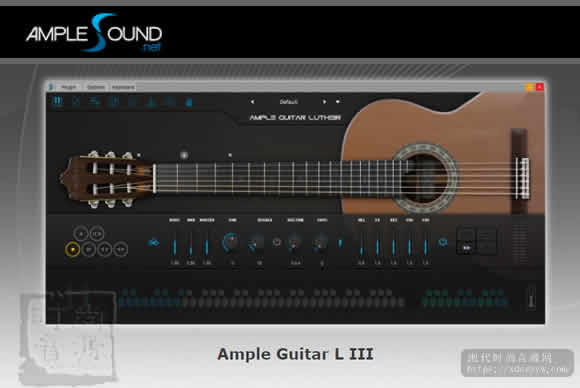![图片[1]-Samplecraze Using Modulation with a 2 Band Filter – FabFilter Simplon [TUTORiAL] | 音色插件资源网-音色插件资源网](https://www.yinsebar.com/wp-content/uploads/2021/01/image-157.png)
奇妙 2020年10月27日| 90兆字节通过使用串联和并联中的2个波段滤波器来处理鼓音来创建交叉调制。FabFilter Simplon在本教程中很有帮助。
将调制与2频段滤波器一起使用– FabFilter Simplon是一个视频教程,介绍了如何使用调制器来影响FabFilter Simplon滤波器插件的滤波器截止。
多频带滤波器为用户提供了广泛的声音设计可能性。但是,许多制作人并未意识到使用串行和并行模拟滤波器从现有音频中创建新纹理的强大功能。但是要掌握多模滤波器,我们需要花一点时间来了解什么是滤波器以及它们如何工作。
筛选器
滤波器可以消除不想要的频率,也可以提高某些频率。删除哪些频率,剩下哪些频率取决于您使用的滤波器的类型。
截止频率这是滤波器开始滤波(阻塞或截止)的点(频率)。滤波器将根据所用滤波器的类型将频率的音量降低到截止频率之上或之下。
这种“频率量的降低”被称为衰减。在低通滤波器的情况下,截止频率以上的频率会衰减。在高通的情况下滤波器,截止频率以下的频率被衰减。简而言之:在低通滤波器的情况下,我们试图阻止某个特定点以上的(较高)频率,并允许较低的频率通过。对于高通滤波器,情况恰恰相反。我们尝试切除或阻止特定点以下的频率,并允许更高的频率通过。
类比器使用电路,仅出于这个原因,滤波器与截止点的距离成比例地衰减频率就需要花费时间。当今的技术允许即时截止,因为滤波器衰减是由算法决定的,而不是由电路决定的。这就是为什么Arp或Oscar等滤波器的表现力和温暖程度更高,它们完全依靠电阻器和电容器来进行预热,然后以渐进方式工作(渐进地倾斜或弯曲,相反)即时)。取决于滤波器的衰减程度或衰减方式,我们可以了解使用模拟滤波器将获得的声音类型。斜率/梯度
滤波器衰减的速度称为斜率或梯度。现在要提出的另一点是,您通常会在模拟合成器的滤波器旋钮上看到每八度具有12 dB或24 dB的值。这基本上意味着,每当频率翻倍时,滤波器都会将该频率下的所有信号衰减12 dB或24 dB。这些也称为2极或4极滤波器,每个极代表6 dB的衰减。这就是模拟电路的构建方式,滤波器用来完成手头任务的电路数量。
谐振大多数合成器制造商,在大多数模拟合成器的情况下,最常使用术语“谐振”。合成器,或软件合成器的其他厂商,可以称之为强调或Q。
在截止点提高窄带频率称为共振。如果要最大程度地增强谐振,则滤波器将开始自振荡。这意味着即使没有接收到输入信号,它也会产生可听的正弦波,更像是啸叫声。
多模滤波器
现在我们知道单个滤波器的工作原理,接下来可以使用两个串联和并联的滤波器。多模式只是指过滤器单元中可用的过滤器数量。这个想法是让一个过滤器的响应塑造声音的一部分,而另一个过滤器的响应塑造声音的另一部分。串联播放滤镜会产生与并行使用滤镜完全不同的纹理。
在将调制与2频段滤波器配合使用– FabFilter Simplon视频中,我解释了如何串联和并联使用两个滤波器。我一定要解释一下过滤器单元的每个功能,以及如何最好地使用它们来获得不同的结果。我以鼓拍作为音频示例,并向您详细展示了如何仅通过使用这些出色的模拟滤波器来完全改变其行为和纹理。
本视频中使用的插件:FabFilter Simplon
本视频中涉及的主题是:
- 串联和并联使用滤波器
- 什么是调制
- 使用交叉调制
- 自动化与调制
- 模式和类型
- 了解Q和宽度
- 技巧和窍门
FANTASTiC | 27 October 2020 | 90 MB
Creating Cross Modulation by using 2 band Filters in Series and in Parallel to process a drum beat. FabFilter Simplon shines in this tutorial.
Using Modulation with a 2 Band Filter – FabFilter Simplon is a video tutorial that explains how to use modulators to affect the filter cut-off of the FabFilter Simplon filter plugin.
Multiband filters afford the user extensive sound design possibilities. However, many producers are unaware of the power of using analogue filters in series and parallel to create new textures from existing audio. But to get to grips with using multimode filters we need to take a little journey into understanding what filters are and how they work.
Filters
A filter allows you to remove unwanted frequencies and also allows you to boost certain frequencies. Which frequencies are removed and which frequencies are left depends on the type of filter you use.
Cut-off frequency This is the point (frequency) at which the filter begins to filter (block or cut out). The filter will lower the volume of the frequencies above or below the cut-off frequency depending on the type of filter used.
This ‘lowering of the volume of the frequencies,’ is called Attenuation. In the case of a low pass filter, the frequencies above the cut off are attenuated. In the case of a high pass filter, the frequencies below the cut off are attenuated. Put simply: in the case of a low pass filter, we are trying to block the (higher) frequencies above a certain point and allow the lower frequencies through. In the case of a high pass filter, the opposite is true. We try to cut out or block frequencies below a certain point and allow the higher frequencies through.
Analogues use circuitry and for that reason alone, it takes time for the filter to attenuate frequencies, in proportion to the distance from the cut-off point. Today’s technology allows for instant cut-off as the filter attenuation is determined by algorithms as opposed to circuits. That is why the filters off an Arp or Oscar etc, are so much more expressive and warm as they rely completely on the resistors and capacitors to, first warm up, then to work but in a gradual mode(gradual meaning sloped or curved as opposed to instant). Depending on how well a filter attenuates or the way it attenuates gives us an idea of the type of sound we will achieve with an analogue filter. Slope/Gradient
The speed at which the filter attenuates is called the slope or gradient. Another point to raise now is that you will often see values on the filter knobs on analogue synthesizers that have 12 dB or 24 dB per octave. That basically means that each time the frequency doubles, the filter attenuates by 12 dB or 24 dB everything at that frequency. These are also known as 2 pole or 4 pole filters, each pole represents 6 dB of attenuation. This is how analogue circuits were built, the number of circuits being used by the filter to perform the task at hand.
Resonance Most synthesizer manufacturers, and in the case of most analogue synthesizers, the term resonance is used most commonly. Other manufacturers of synthesizers, or software synthesizers, might call it emphasis or Q.

Boosting the narrow band of frequencies at the cut-off point is called resonance. If you were to boost the resonance to the maximum, then the filter will begin to self oscillate. This means that it will generate an audible sine wave, more like whistling, even when receiving no input signal.
Multimode Filters
Now that we know how a single filter works we can move onto using two filters in series and in parallel. Multimode simply refers to the number of filters available in the filter unit. The idea is to have one filter’s response shape one part of the sound and the other filter’s response to shape the other part of the sound. Playing the filters in series creates a completely different texture to using them in parallel.
In the Using Modulation with a 2 Band Filter – FabFilter Simplon video I explain how to use two filters in series and in parallel. I make sure to explain every feature of the filter unit and how best to use them to achieve different results. I use a drum beat as the audio example and show you in detail how to completely change its behaviour and texture just by using these wonderful analogue filters.
The plugin used in this video: FabFilter Simplon
Topics covered in this video are:
- Using Filters in Series and in Parallel
- What is Modulation
- Working with Cross Modulation
- Automation and Modulation
- Modes and Types
- Understanding Q and Width
- Tips and Tricks


![[三体中国民乐全套 效果器合集] 古风中国风编曲必备 R2R [WiN, MacOSX](40GB+)稳定运行版本-音色插件资源网](https://www.audioba.com/wp-content/uploads/2024/12/20240725195002777-QQ_1721908198947-734x550-1.png)

![[最新Ample吉他3代音色免安装25套合集]Ample Guitar Bass v3.7.0 [WiN, MacOSX](77.1GB+)-音色插件资源网](https://www.audioba.com/wp-content/uploads/2024/11/ample-sound.jpeg)
![[智能自动编曲软件 ]band in a box 2024 中文汉化完整版+安装方法 [WiN](201GB+)-音色插件资源网](https://www.audioba.com/wp-content/uploads/2024/10/Band-in-a-Box-10.jpg)










